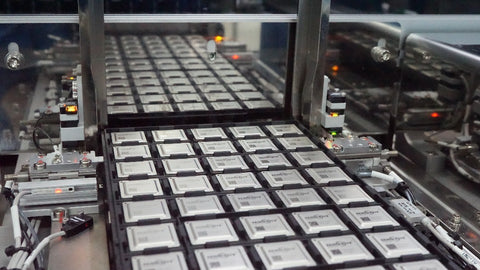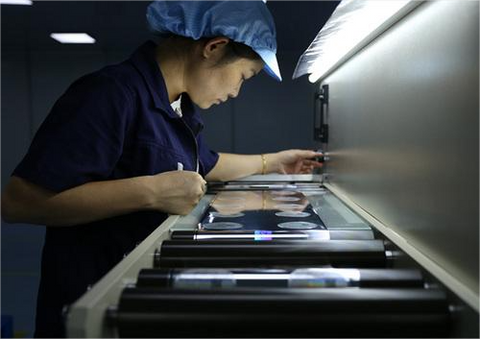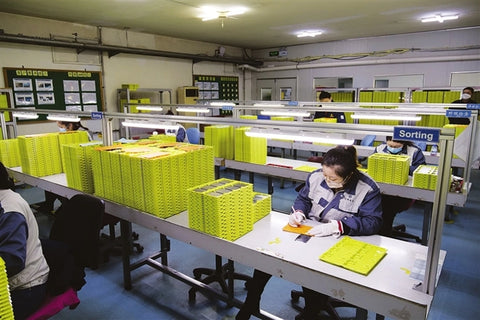China is known as the world's manufacturing hub, producing a wide range of products that are exported to other countries. These products include electronics, clothing, furniture, and many others. The demand for Chinese products is increasing due to their competitive price, but there are also concerns about the quality of these products. To address these concerns, China has implemented a comprehensive quality inspection process for its products, ensuring that they meet international standards. This article will discuss in detail the quality inspection process of China products.
The quality inspection process in China can be divided into three main stages: pre-production inspection, in-process inspection, and final inspection. Each stage is crucial in ensuring that the final product meets the highest standards of quality.
Pre-Production Inspection:
The pre-production inspection is carried out before the actual production process begins. It is an essential step in ensuring that the raw materials used in the production process meet the required standards. During this stage, the quality control team inspects the quality of the materials, such as the appearance, size, and weight, and checks for any defects or damage. If any issues are found, the materials are rejected, and the supplier is asked to provide better-quality materials.

In-Process Inspection:
The in-process inspection is carried out during the production process. It ensures that the product is being manufactured according to the specifications and requirements provided by the client. The quality control team checks the product at various stages of the production process to ensure that it meets the required standards. This includes checking the dimensions, weight, appearance, and functionality of the product.

Final Inspection:
The final inspection is the last stage of the quality inspection process. It is carried out when the production process is complete, and the product is ready for shipment. The quality control team inspects the product to ensure that it meets the required standards and specifications. This includes checking the appearance, functionality, and packaging of the product.

China Quality Inspection Status
However, with reports of quality issues and product defects, buyers have become increasingly concerned about the quality of Chinese products. Despite the quality inspection process in China is robust, there are still several challenges faced in ensuring the highest standards of quality. One of the biggest challenges is the language barrier. Most of the workers in Chinese factories speak Mandarin, which makes communication difficult for foreign clients. This can lead to misunderstandings and misinterpretations, which can affect the quality of the final product.
China Quality Inspection Standard
Fortunately, China has established national and international standards for product quality and safety, which apply to products sold in China as well as those exported to other countries.
One of the most well-known quality inspection standards in China is the China Compulsory Certification (CCC). This is a mandatory certification system that covers a wide range of products, including electronics, toys, automotive products, and more. The CCC mark indicates that a product has met the relevant safety and quality standards and is authorized for sale in China.

Other quality inspection standards used in China include international standards such as ISO and ASTM, and industry-specific standards established by associations such as the China National Textile and Apparel Council or the China National Hardware Association.
To ensure that products meet these standards, foreign buyers often use third-party inspection companies to conduct quality inspections of products before they are shipped from China. These inspection companies use various methods such as visual inspections, functional tests, and lab testing to evaluate the quality and safety of products.
Additionally, the Chinese government has set up various institutions to oversee the quality inspection and testing of products. The General Administration of Quality Supervision, Inspection, and Quarantine (AQSIQ) is responsible for setting and enforcing national standards for product quality and safety. The China National Accreditation Service for Conformity Assessment (CNAS) is a national accreditation body that assesses the competence of third-party inspection and testing agencies to ensure their quality and impartiality.
Overall, while there are many different standards for quality inspection in China, the most important thing for foreign buyers is to work with reputable suppliers who are committed to meeting these standards and ensuring that their products are of the highest quality. By doing so, foreign buyers can minimize the risk of quality issues and product defects, and ensure that their supply chains remain reliable and high-quality.
What should I do in the case of a failed inspection?
When Chinese products fail the quality inspection, foreign buyers have several options they can pursue to rectify the situation.
1. Negotiate with the Supplier
One option for foreign buyers is to negotiate with the supplier. This involves working with the supplier to come up with a solution to the quality issue. The buyer can request that the supplier rework the products to meet the required quality standards, or they may ask for a refund or a discount.
2. Request a Re-inspection
Another option for foreign buyers is to request a re-inspection of the products. If the products fail the second inspection, the buyer may pursue legal action against the supplier.
3. Seek Legal Remedies
If negotiations with the supplier fail, foreign buyers may seek legal remedies. This involves taking legal action against the supplier to recover damages. Depending on the circumstances, this could involve filing a lawsuit in China or the buyer’s home country.
4. Find a New Supplier
If the quality issue cannot be resolved, foreign buyers may consider finding a new supplier. This can be a time-consuming process, but it may be necessary to ensure that the buyer’s supply chain remains reliable and high-quality.
5. Use a Sourcing Agent
Finally, foreign buyers may consider using a sourcing agent to help them navigate the Chinese market. Sourcing agents are local experts who can help buyers find reliable suppliers, negotiate prices, and oversee the quality control process. This can help foreign buyers to minimize the risk of quality issues and product defects.

Which inspection should I choose?
Ideally, booking product inspections at all stages of the product will ensure maximum protection.
To save on costs, most buyers purchasing low to medium volumes will only choose to inspect at 2 or 3 steps of the production, and the most popular inspection is the final Inspection. Note that we can help you determine what inspection service you shall put in place depending on your exact situation.
Click here to learn more about our quality control services
We hope this article can provide you with some inspiration about Quality Inspection in China. If you have any questions after reading this, please leave a comment below.

